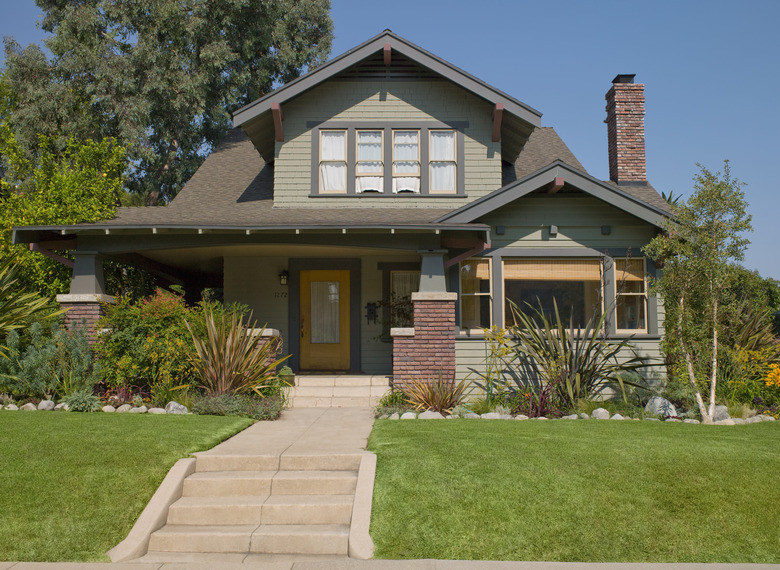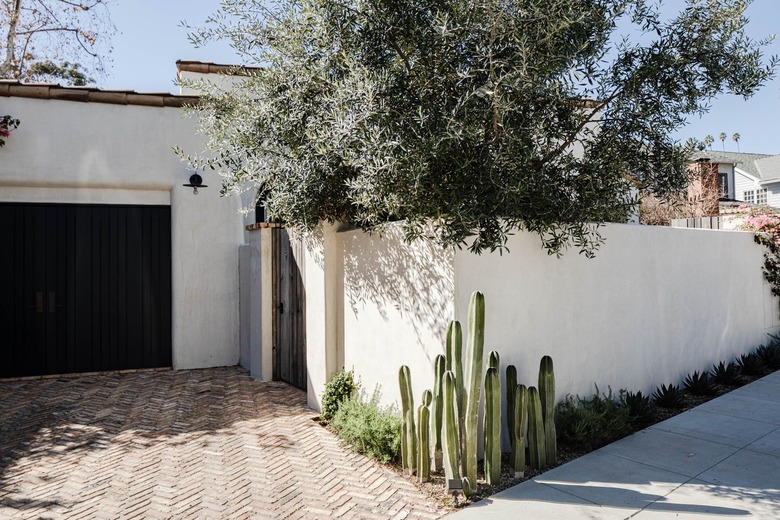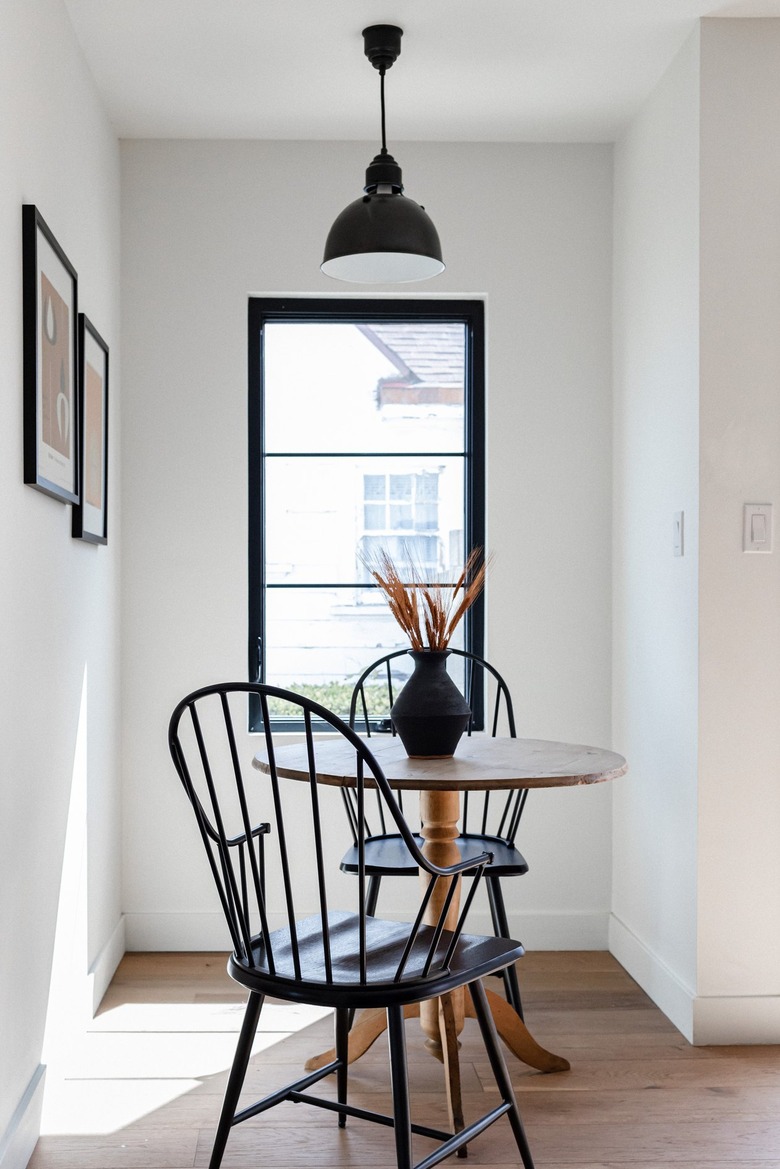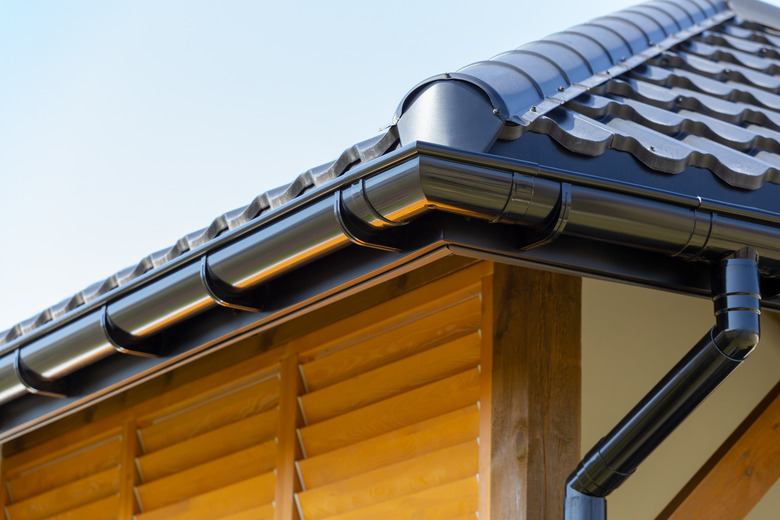How To Build A Fire-Resistant Home (Or Renovate Your Home To Be Safe From Fires)
We may receive a commission on purchases made from links.
With the prevalence of wildfires in regions of the United States that have grown increasingly arid and hot, creating a fire-resistant home is of great interest. While home fires that start from indoors are still a huge problem, an equally big issue is the many thousands of homes lost each year when outdoor wildfires race across the landscape, consuming everything in their way. In some rural areas, up to 45 percent of all home fires originate from outside the home, mostly from wildfires during the summer months.
Areas of California, the Pacific Northwest and the Rocky Mountain states have been especially hard-hit, but nearly any home built in a suburban or rural area nestled within wooded or grassy areas where there are trees, shrubs and other plant life is susceptible to fire. In 2020 alone, California wildfires consumed 4.2 million acres — a staggering 4 percent of the total land area of the state. Nationwide, 2020 saw 10.12 million acres burned and more than 50,000 homes destroyed. Some years have seen the loss of more than 100,000 homes to wildfire, but in general, the rate of wildfires and resulting home destruction has been on a steady rise since 1970.
Though homeowners or builders can't create a completely fireproof home, there are construction materials and best building practices that will keep a home as safe and flame-resistant as it can possibly be when in the literal line of fire.
Dangerous Building Practices and Climate
Dangerous Building Practices and Climate
The rise in the destruction of residential properties by wildfires is thought to be due to two simultaneous trends.
First, many experts acknowledge that climate change and rising global temperatures have caused multiple regions to experience prolonged drought conditions, creating the tinder conditions that make it easier for forests and grasslands to erupt in uncontrollable fires when struck by lightning or when ignited by human mistakes like leaving behind an active camp fire or flicking a cigarette out the window.
It's undeniable that rising average global temperatures since about 1970 have been echoed by a rise in the number of acres burned by wildfires. The U.S. Climate Assessment Report estimates that half of the increased incidence of home-consuming wildfires is due to climate change. A warmer world makes for drier fuel for fires as well as for a longer fire season.
The other reason for the increased fire danger involves residential building practices. Since the 1970s, there has been an increased preference for building new rural and suburban homes in naturalized areas, such as cul-de-sacs tucked into stands of woods or prairie or in attractive canyons and ravines that offer privacy and natural beauty. These areas make for very pleasant living until a lightning strike or careless bonfire sets the area ablaze with an uncontrollable fire. California's practice of building housing developments into large chaparral canyons lined with highly flammable shrubs and trees is an invitation for disaster, especially in the drought conditions that have become standard. It's estimated that 4.5 million homes in the U.S. are currently at risk from wildfires.
Fortunately, there are ways to minimize the likelihood of your home being destroyed or seriously damaged by a wildfire, and many of these strategies can also offer some mitigation from fires that begin indoors. Creating fire-resistant construction requires thinking about every element of your home, from the location of the building site to the design of its home security and other systems.
Choosing a Fire-Resistant Building Site
Choosing a Fire-Resistant Building Site
If you are building a new home (or even when looking at new real estate) carefully consider the building site, especially if you live in a region where wildfires are a frequent threat. The nature of a wildfire is to follow wind currents. Pay attention to both the common wind patterns in the area and the topography of the neighborhood. The famed Santa Ana winds of California, for example, are known for their habit of flowing downhill through mountain passes, so it makes sense to avoid building locations that are immediately downhill from areas of timber or heavy brush growth.
In other locations, however, predominate winds are usually west to east, and in most places, fires tend to travel most easily uphill since heat naturally rises. In some areas of Colorado, for example, the very worst place to build is on the crests of hills where the western downhill slopes are covered with forest, brushland or other homes that can become tinder for a fast-moving fire. Always look at what kind of terrain lies immediately upwind of your proposed building site.
Where possible, it also makes sense to own a fairly large building site so your lot can be landscaped to maximize its fire safety. Detached buildings as well as garages should be kept separate from the house if possible. For most families, these structures are where paints, fuels and other flammables are stored, and it's best to keep these fire hazards a minimum of 30 feet from the residence if possible.
If there is a predominant wind direction in your area, it will also make sense to build so that the side facing the direction from which fires are most likely to approach has fewer windows and doors and smaller openings.
Creating a Fire-Resistant Landscape
Creating a Fire-Resistant Landscape
The goal of fire-resistant landscaping is to make sure you have a defensible perimeter around your home. Begin by laying out the landscape so there are adequate wide driveways to allow emergency vehicles to get to your home quickly.
- Avoid planting shrubs and other plants right up to the foundation (which are among the weakest links when it comes to fire safety). A 2-foot band of crushed rock around the home's foundation is a good idea in fire-danger regions.
- Avoid natural wood for decking, fences and other structures. Use composite building materials with a class A fire rating whenever possible.
- Make sure the house is fitted with hose spigots on all four sides, which can help you wet down the siding, roof and nearby plants if a fire is approaching.
- Avoid landscaping with highly flammable trees and shrubs, such as eucalyptus, cypress, cedar and other oily conifers. Consult with local experts for information on plants in your area that resist fire. Don't use tall ornamental grasses in garden beds, which will serve as fuel for fires.
- Plant trees at least 30 feet apart and keep the closest trees a minimum of 30 feet and preferably 50 feet away from the home.
Fire-Resistant Building Foundations
Fire-Resistant Building Foundations
As you plan the actual home construction, begin with the foundation. Homes built on concrete-block or poured concrete foundations have natural fire protection from creeping grass fires igniting the house at ground level. If you live in a fire-risk area, you might want to build your home on a higher elevated concrete foundation to maximize its safety.
The best choice of all is an insulated concrete form foundation. These foundations are made with polystyrene blocks that fit together to make the foundation shell. When filled with poured concrete, the foundation walls fully resist fire and heat for as much as four hours. Not only are they fireproof but they also prevent heat from possibly igniting indoor materials.
If possible, avoid building any home — even a vacation cabin — on a raised pier foundation, which invites fire to ignite your home from below. If you must build this way, protect the crawl spaces beneath the home with some form of fireproof skirting of the type often used to skirt mobile homes.
Fire-Resistant Siding Materials
Fire-Resistant Siding Materials
The exterior walls of your home are the most critical area for building a fire-resistant home. Untreated wood siding is by far the worst possible choice. Good choices include cultured or natural stone, brick, stucco or aluminum siding. If you want the look of wood, cement fiber lap siding is an excellent choice. Vinyl siding will be likely to melt if a fire gets close, but even this is a better choice than wood siding.
Fire-Resistant Windows and Doors
Fire-Resistant Windows and Doors
Window and door openings are highly vulnerable to fire and may well shatter simply because of the intense heat of a nearby fire, even when flames have not yet reached the home. When the window glass ruptures, flying embers have a very easy entry into your home.
- To maximize fire resistance, install double- or triple-pane insulated tempered glass windows and doors with aluminum or steel-clad frames.
- Smaller window panes are always better than large panes. You may want to design the home so that the side facing the predominant wind direction has fewer and smaller window openings.
- Avoid skylights, especially plastic ones, because they can quickly melt and allow embers into the house.
- Avoid wooden entry doors. Aluminum- or steel-clad insulated doors are best for fire resistance.
- In areas where wildfires are a frequent threat, consider nonflammable shutters that can be closed to protect the house when fire threatens.
Fire-Resistant Roofing
Fire-Resistant Roofing
Avoid wood shingles or shakes for roofing materials if you live in a wildfire danger zone. Opt instead for class-A-rated fire-resistant materials, which can include:
- Fiberglass-based asphalt shingles
- Standing-seam metal roofing
- Metal tile roofs
- Clay tile
- Cement tile
- Slate or natural stone roofing
Steeper pitches are better than flat roofs when it comes to fire resistance, as embers tend to slide down the roof rather than remain burning on top.
Fire-Resistant Interiors
Fire-Resistant Interiors
It is quite hard to make a home's interior fully fire-resistant since so much of a home's interior is made from wood, fabric and other flammable materials, but you can improve the chances for your home's survival with several building practices:
- Specify metal studs and other framing members wherever possible. Load-bearing walls for residential construction are almost always built from wood framing members, but nonloadbearing partition walls can be framed with metal studs. Specify steel posts, beams, headers and other support members instead of wood when it is practical. The less wood in your house, the better its chances for survival if a fire does start.
- Finish walls with fire-rated drywall. Walls are normally finished with 1/2-inch drywall panels with paper facing, but specifying Type-X (fire-resistant) panels for all construction will improve the home's survival chances. Type-X panels are extra thick and 5/8 inch with glass fibers added to the paper facing to improve fire resistance.
- Adding insulation to all walls will slow down heat transfer. While it's normally only outside walls that are insulated, adding insulation to all walls, ceilings and floors is a good idea in fire-danger regions. Make sure the insulation is fire-resistant; fiberglass batting is the standard choice.
Fire-Resistant Systems
Fire-Resistant Systems
Finally, do what you can to equip your home with mechanical systems that help in fire prevention.
- Make sure your home has working smoke/fire alarms, preferably a hardwired system with battery backup.
- If your home has a security system, make sure it is equipped with smoke/heat sensors that will automatically alert authorities in the event of fire. While fire alarms were once simply audible alarms designed to wake you if a fire started, today's monitored intruder alarm systems can also be integrated with smoke and fire detection features. Even DIY-installed systems can now include this capability.
- Install an interior fire-suppression sprinkler system where required and where practical. Some regions, such as California, require this for all new home construction, but it is a good idea in any region where wildfires are a danger. While retrofitting a sprinkler system into an existing home is more expensive, it is also an option to consider during major remodeling projects.
- Make sure your landscape has a sprinkler system. When a wildfire approaches, thoroughly watering down the lawn and landscape can reinforce the defensible perimeter of your home.
Make sure that ductwork and vents for furnaces, plumbing stacks, clothes dryers and other systems are fitted with screen mesh grids that will prevent embers from flying into the home. The smaller the grid size, the better, but it's also important not to impede the necessary air circulation or ventilation of the system. If time allows, you may be able to shut off home systems and cover these openings with solid covers as a wildfire approaches your home. Remember that any entry point poses a danger of sparks and embers getting into your home.
Fire-Resistant Home Maintenance Practices
Fire-Resistant Home Maintenance Practices
Wildfires can spring up at almost any time, but especially during the peak fire season, it's important to practice good maintenance routines to stay prepared.
- Make sure that roof gutters are kept clear of leaves and sticks.
- Inspect and prune shrubs and trees on a monthly basis, making sure that dead branches are cut away and removed.
- Keep your landscape plants well watered, green, healthy and pruned down to a manageable size.
- Make sure that fallen leaves and grass clippings are raked or bagged after each mowing session.
- Dispose of leftover paints and solvents that are unlikely to be used. Those you must keep should be stored in fireproof cabinets.
- Don't store firewood anywhere near the home.
Making your home and landscape fire-resistant can make all the difference in the world. In neighborhoods that have been ravaged by fast-moving wildfires, authorities often later find that a single home or two seem mysteriously untouched while all surrounding homes are utterly destroyed. There is no mystery, however — the owners of these homes have done nothing except to follow these simple tips for making their homes fire-resistant.
References
- Cal Fire: Stats and Events
- National Interagency Fire Center: Wildfires & Acres
- University of Florida IFAS Extension and USDA Forest Service: Selecting Firewise Shrubs to Reduce Wildfire Risk
- National Fire Protection Association: Fire Loss in the United States
- This Old House: Fire-Resistant Roofing & Siding
- Design Everest: How to Build a Fire-Resistant House



